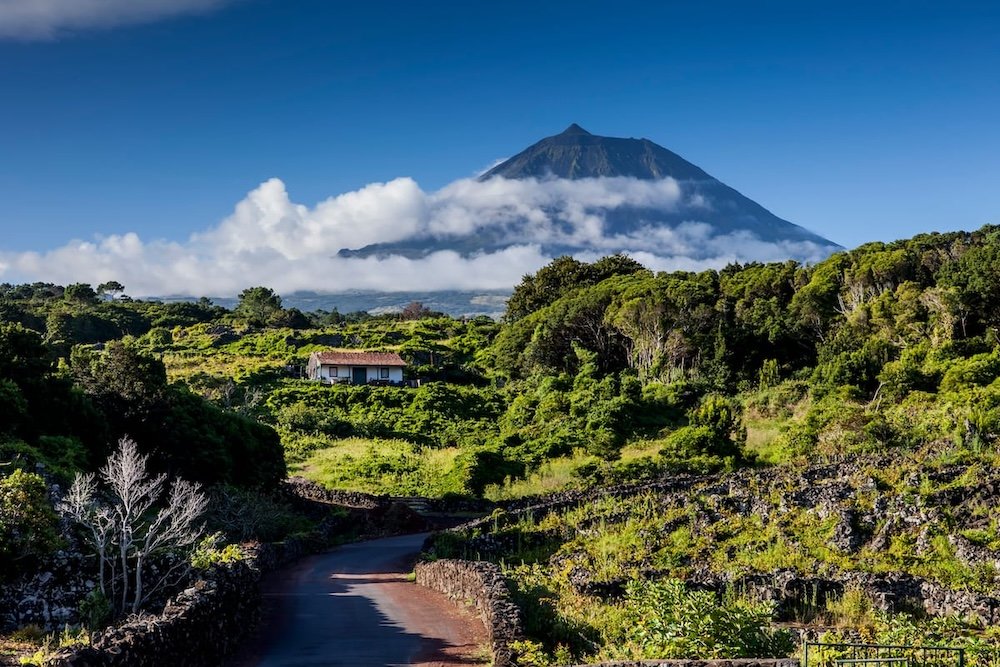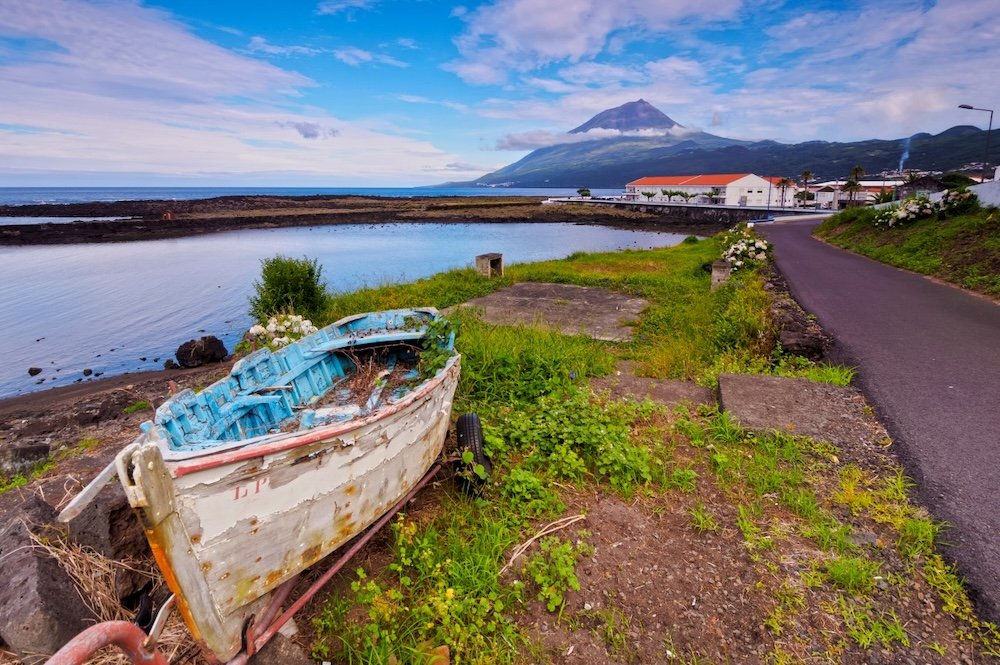
Nestled in the heart of the North Atlantic Ocean, Pico Island emerges as a jewel of the Azores archipelago, a captivating destination for adventurers, nature lovers, and cultural enthusiasts alike.
This enchanting island, part of Portugal’s remote Azores, is famed not only for its breathtaking landscapes but also for its rich cultural tapestry and historical significance.
At the core of Pico Island’s allure is its remarkable blend of natural beauty and human heritage, a fusion that has earned it recognition on the global stage.
Pico Island is strategically positioned in the central group of the Azores, Portugal, offering a unique vantage point for exploring the vast Atlantic and its wonders.
The island’s dramatic scenery is dominated by the imposing Mount Pico, Portugal’s highest peak, which stands as a sentinel over the island’s diverse landscapes.
The mountain’s presence is felt everywhere on the island, from its lava fields to its verdant forests, shaping the climate and the very essence of life here.
The island’s cultural landscape, particularly its vineyard terrain, has been distinguished by UNESCO as a World Heritage Site.
This prestigious designation underscores the extraordinary way in which the islanders have adapted their agricultural practices to the island’s challenging terrain over centuries.
The vineyards of Pico Island, set against the backdrop of Mount Pico and the deep blue sea, create a picturesque landscape that is not only a testament to human ingenuity but also a living museum of agricultural history.
The UNESCO status celebrates the harmonious interaction between people and nature, highlighting the sustainable practices that have allowed both to thrive.
Pico Island’s UNESCO World Heritage status is further enhanced by the significance of Mount Pico itself.
This majestic mountain is not just a natural landmark but also a symbol of the Azorean spirit, representing the resilience and determination of the people who have made this island their home.
The cultural and natural heritage of Pico Island, encapsulated by its vineyards and the mountain, offers a unique insight into the enduring relationship between humans and the environment.
In this guide to Pico Island, we invite you to explore the wonders that make this island a must-visit destination in the Azores.
From its volcanic landscapes and rich maritime heritage to its world-renowned wines and welcoming communities, Pico Island offers an unparalleled adventure for all who tread its paths.
Getting to Pico Island

Reaching Pico Island, a hidden gem in the Azores, Portugal, is an adventure in itself, offering a glimpse into the island’s remote beauty and unique charm.
Whether you’re flying into the island or arriving by sea, the journey to Pico Island is as breathtaking as the destination.
Below, we outline the primary ways to embark on your Pico Island adventure, along with tips on the best times to visit to fully embrace the island’s natural splendor and vibrant culture.
By Air
The gateway to Pico Island is through its airport, Aeroporto do Pico (PIX), which welcomes direct flights from Lisbon and Ponta Delgada.
Operating throughout the year, these flights are the quickest and most efficient way to set foot on Pico Island.
During the summer months, the frequency of flights increases, making it easier for travelers to find convenient travel schedules.
Additionally, international visitors often find connecting flights through Lisbon as a seamless way to reach Pico Island, offering an opportunity to explore Portugal’s capital before diving into the Azores’ tranquil beauty.
By Sea
For those looking to embrace the maritime journey, ferries provide an alternative route to Pico Island.
Operated by Atlanticoline, the ferry service connects Pico Island with other islands in the Azores, such as Faial, São Jorge, and Terceira, offering a scenic route across the Atlantic.
This option not only allows travelers to enjoy the azure waters of the Atlantic but also offers the flexibility to explore multiple islands during their trip.
The ferry schedules vary seasonally, with increased services during the summer months to accommodate the higher influx of tourists.
Best Times to Visit
Pico Island, with its mild climate year-round, is welcoming at any time.
However, to fully capture its essence, considering the weather and tourist seasons can enhance your experience.
The best time to visit Pico Island is between May and September when the weather is warmer, and the island’s natural beauty is in full bloom.
This period is ideal for hiking, whale watching, and vineyard tours, offering sunny days and pleasant temperatures.
The peak tourist season falls in July and August, coinciding with the island’s vibrant cultural festivals and events.
While this time offers a lively atmosphere and the warmest weather, it’s also when Pico Island sees the most visitors.
For those seeking a quieter visit, May, June, and September are excellent choices, offering the perfect balance between pleasant weather and fewer tourists.
No matter when you choose to visit, Pico Island’s enchanting landscapes, rich culture, and welcoming locals ensure a memorable adventure that beckons travelers to return.
History and Culture
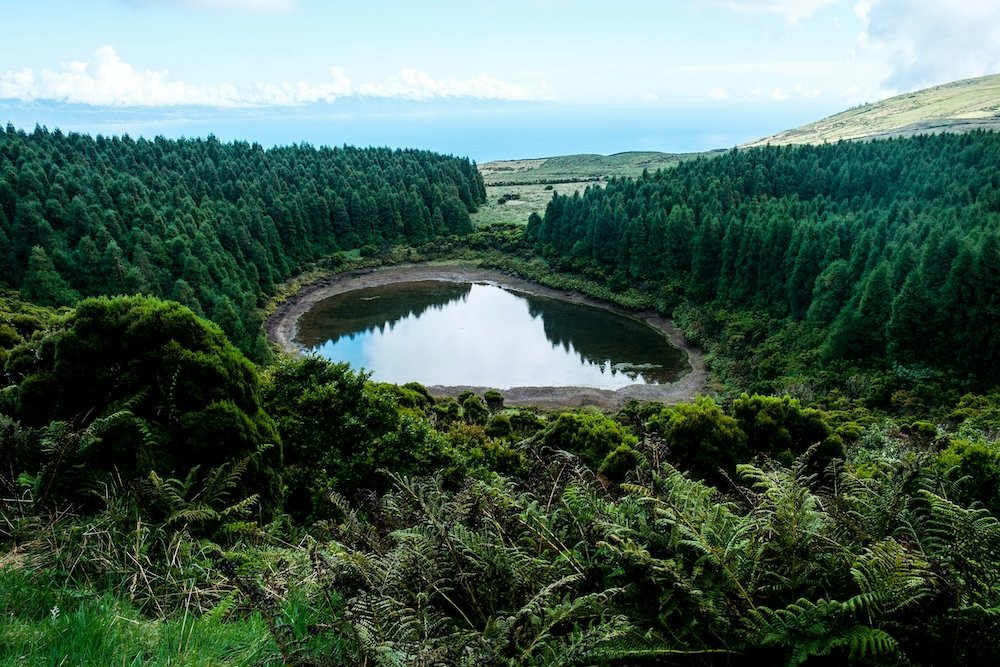
Pico Island’s storied past and vibrant cultural heritage are as captivating as its natural landscapes.
From the early settlers to its contemporary inhabitants, the island has fostered a unique cultural identity, deeply rooted in its volcanic soil and the vast Atlantic that surrounds it.
This section delves into the rich history and enduring traditions that make Pico Island a fascinating destination for cultural exploration.
Brief History of Pico Island
The discovery of Pico Island dates back to the 15th century, shortly after the Azores were initially sighted by Portuguese navigators.
Its settlement began in the late 1400s, with settlers primarily coming from mainland Portugal and other parts of the Azores.
The island’s challenging volcanic terrain and the surrounding ocean shaped the early settlers’ way of life, fostering resilience and adaptability that are still evident in the local culture today.
Over the centuries, Pico Island’s economy was largely based on whaling, agriculture, and, most notably, winemaking.
The whaling industry thrived until the mid-20th century, leaving behind a rich maritime heritage that is celebrated on the island to this day.
However, it is the vineyards, with their distinctive stone walls protecting vines from the Atlantic winds, that have become a symbol of the island’s cultural landscape, recognized by UNESCO for their historical and cultural significance.
Cultural Heritage
Pico Island’s cultural heritage is a tapestry of traditions, from its unique wine culture to its festive celebrations.
The island’s winemaking tradition dates back to the early settlers, who cultivated vines in the lava-rich soil, creating a landscape of “currais” (small, rectangular plots surrounded by basaltic stone walls).
This method of viticulture has produced distinctive wines, including the famed Verdelho, which has been cherished locally and abroad for centuries.
Today, visiting the vineyards of Pico Island offers a glimpse into this age-old tradition, with opportunities to taste the island’s exceptional wines and learn about the intricate process of winemaking in a challenging yet rewarding environment.
Traditional festivities on Pico Island are a vibrant expression of its cultural heritage, with celebrations deeply rooted in the island’s history and community spirit.
One of the most anticipated events is the Semana das Baleias (Whale Week), which pays homage to the island’s whaling history through music, exhibitions, and storytelling.
Equally important are the religious festivals, particularly the Festas do Espírito Santo (Feasts of the Holy Spirit), which feature processions, traditional music, and communal meals, reflecting the islanders’ deep faith and close-knit community bonds.
Pico Island’s culture is a celebration of resilience, community, and harmony with nature, embodied in its historical landmarks, winemaking legacy, and festive traditions.
Visitors are welcomed to immerse themselves in the island’s rich cultural tapestry, offering an experience that goes beyond the scenic vistas to the heart of Pico Island’s identity.
Natural Attractions

Pico Island is a sanctuary of natural beauty, boasting an array of landscapes that captivate the heart of every explorer.
From the majestic heights of Mount Pico to the serene depths of its volcanic caves, and the refreshing allure of its natural pools and beaches, the island offers a plethora of natural attractions waiting to be discovered.
This guide highlights these wonders, providing insights into enjoying Pico Island’s natural offerings responsibly and safely.
Mount Pico
Dominating the landscape, Mount Pico is not only the highest peak in Portugal but also a beacon for adventurers seeking to commune with nature.
The ascent to the summit offers breathtaking views and a sense of unparalleled accomplishment. Hiking Mount Pico is a rewarding experience, with well-marked trails leading intrepid explorers to its peak.
The journey typically begins at the mountain’s base, where hikers can follow the trail that winds its way up to the summit.
Safety Tips for Hiking Mount Pico:
- Preparation is key: Ensure you’re well-prepared with water, snacks, sturdy hiking boots, and weather-appropriate clothing.
- Start early: Begin your ascent early in the morning to avoid the afternoon mist and to ensure you have enough daylight.
- Hire a guide: For a safe and informative experience, consider hiring a local guide who knows the mountain well.
- Respect the environment: Stay on marked trails to protect the fragile ecosystem and ensure the mountain remains pristine for future visitors.
Volcanic Caves: Gruta das Torres
Gruta das Torres, the largest lava tube in Portugal, offers a fascinating underground adventure on Pico Island.
Visitors can explore this magnificent geological formation, witnessing the raw beauty of volcanic landscapes from within.
The cave’s interior reveals stunning formations, including stalactites and ‘lava balls’, created by past volcanic flows.
Visiting Gruta das Torres:
- Guided tours: To ensure safety and respect for the cave’s natural environment, entry is only possible as part of a guided tour.
- Wear appropriate gear: The cave’s temperature is cooler, and the terrain can be slippery, so wearing warm clothing and sturdy shoes is recommended.
Natural Pools and Beaches
Pico Island’s coastline is dotted with natural swimming pools formed by volcanic rock, offering serene spots for relaxation and swimming.
These pools, filled with crystal-clear Atlantic water, are perfect for a refreshing dip in a unique setting.
Additionally, Pico Island boasts a selection of beaches, with Praia do Lajido and Praia da Areia Larga being among the favorites for their scenic beauty and tranquil waters.
Highlights:
- Natural pools: The pools at São Roque and Madalena offer easy access to the sea and are equipped with amenities such as changing rooms and cafés.
- Beaches: While many of Pico Island’s beaches are rocky, they offer stunning views and peaceful spots for sunbathing and picnicking.
Pico Island invites nature lovers to explore its diverse natural attractions, from the heights of Mount Pico to the depths of Gruta das Torres, and the inviting natural pools and beaches along its coast.
Each offers a unique way to experience the island’s natural beauty, creating memories that last a lifetime.
Wildlife and Whale Watching

Pico Island, in the heart of the Azores, serves as a breathtaking stage for one of nature’s most spectacular shows: the annual migration of whales and dolphins through its waters.
This section offers insights into the marine giants and playful cetaceans that grace the island, along with tips on the best times and ways to witness these magnificent creatures up close.
Types of Whales and Dolphins around Pico
The waters surrounding Pico Island are a haven for a diverse array of whale and dolphin species, making it one of the world’s premier spots for whale watching. Among the most awe-inspiring visitors are:
- Sperm Whales: The most frequently sighted whales around Pico, known for their distinctive shape and immense size.
- Blue Whales: The largest animals on Earth, these gentle giants are often spotted in spring during their migration.
- Fin Whales and Humpback Whales: Also migrating through Pico’s waters, these species add to the island’s rich tapestry of marine life.
- Dolphins: Several species, including Bottlenose, Atlantic Spotted, and Common Dolphins, playfully accompany boats, offering unforgettable encounters.
Best Times of Year for Whale Watching
The best time to embark on a whale-watching adventure around Pico Island is from April to October, with peak sightings occurring in the spring and early summer months.
This period aligns with the migration patterns of many whale species, providing the highest chances of encounters.
- Spring (April to June): Ideal for spotting the largest variety of whales, including the majestic Blue Whale.
- Summer (July to September): Offers warm weather and excellent conditions for observing Sperm Whales and a variety of dolphins.
Recommended Tour Companies
Several reputable tour companies operate out of Pico Island, offering guided whale-watching excursions that respect the delicate balance of marine life.
These companies are committed to sustainable practices, ensuring that your experience contributes to the conservation of these magnificent creatures.
When selecting a tour provider, look for those with experienced guides and a strong emphasis on ethical wildlife observation.
- Cetacean-Watching: Renowned for their knowledgeable guides and commitment to conservation, this company offers intimate and educational tours.
- Azores Whale Watching: With a focus on small group experiences, they provide a personalized and respectful approach to whale watching.
- Ocean Emotions: Their expert team offers a comprehensive educational component, enhancing the experience with insights into the lives of the whales and dolphins of Pico Island.
Witnessing the grandeur of whales and the playful antics of dolphins around Pico Island is an experience that resonates with the soul, reminding us of the wonder and beauty of the natural world.
This island, with its rich marine biodiversity and commitment to conservation, offers a window into the lives of these majestic sea creatures, making it a must-visit destination for wildlife enthusiasts.
Wine and Gastronomy
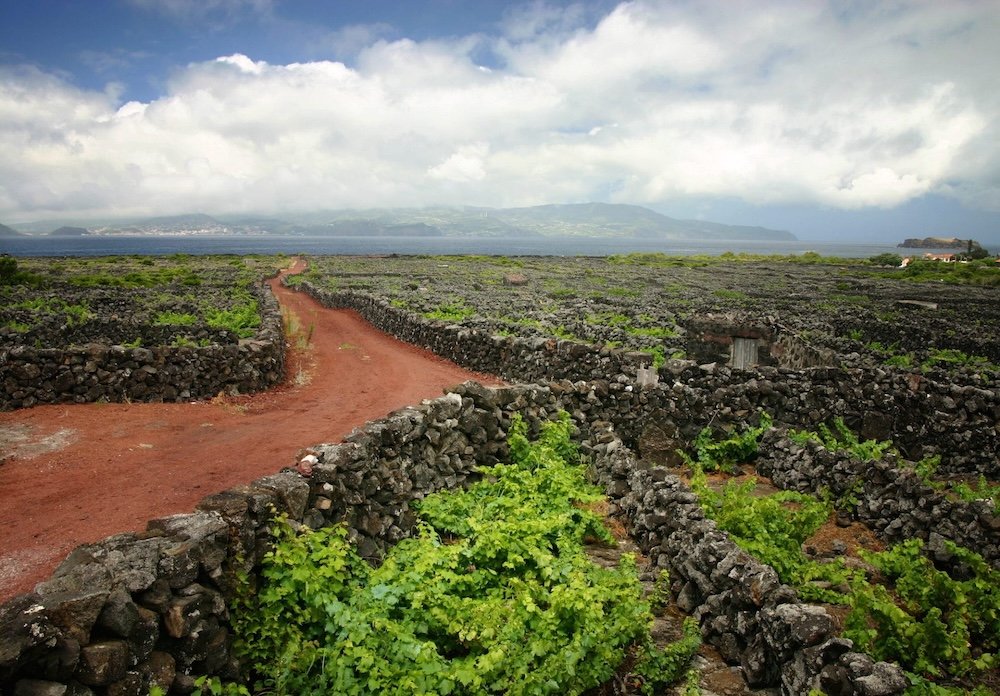
Pico Island’s volcanic soil and unique climate have not only shaped its landscapes but also its distinctive wine culture and gastronomy, creating an epicurean paradise in the middle of the Atlantic.
This section uncorks the history of winemaking on the island and serves up recommendations for indulging in Pico Island’s culinary treasures, with a spotlight on its renowned wines and seafood.
Pico’s Vineyards and Wine Culture
The tradition of winemaking on Pico Island dates back to the 15th century, when the first settlers, recognizing the fertility of the island’s volcanic soil, began cultivating grapevines.
Over centuries, the islanders have perfected the art of viticulture, adapting their methods to the unique environmental conditions of Pico Island.
This heritage is most visibly represented by the intricate network of “currais” – stone-walled plots that protect the vines from the salty sea winds, a practice that has earned the island’s vineyard landscape UNESCO World Heritage status.
The wines of Pico Island, particularly the white wines made from the Verdelho grape, are celebrated for their quality and unique characteristics.
The island’s wineries, ranging from historic estates to modern producers, offer a journey through time, showcasing the evolution of winemaking techniques while preserving the essence of Pico Island’s wine culture.
Wine Tasting Tours
Exploring Pico Island’s vineyards through guided tours is an experience not to be missed.
These tours offer an insider’s view of the winemaking process, from grape cultivation to the aging of the wines, culminating in tastings that highlight the variety and complexity of Pico Island’s wines.
Some recommended wineries and tours include:
- Cooperativa Vitivinícola da Ilha do Pico: Offering a comprehensive tour of Pico’s wine history and a tasting session of their award-winning wines.
- Adega A Buraca: Known for its intimate tours and insights into traditional winemaking practices, coupled with tastings of wines and local spirits.
Local Foods to Try
The cuisine of Pico Island is a reflection of its maritime surroundings, with seafood playing a starring role.
The island’s restaurants and taverns serve a variety of fresh, locally-sourced seafood dishes that marry traditional Azorean flavors with contemporary culinary techniques. Must-try dishes include:
- Lapas Grilled: A local delicacy, these limpets are grilled with garlic and butter, offering a taste of the sea with every bite.
- Caldeirada de Peixe: A traditional Azorean fish stew, rich with the flavors of various fish and shellfish, simmered in a tomato-based broth with potatoes and local spices.
- Chicharros com Molho de Vilão: A popular dish featuring mackerel in a piquant sauce, showcasing the island’s love for bold flavors.
Complementing these dishes with a glass of Pico wine elevates the dining experience, creating a symphony of flavors that encapsulates the essence of Pico Island.
The vineyards and gastronomy of Pico Island offer a window into the island’s soul, where the bounty of the land and sea meets the passion and creativity of its people.
This blend of history, culture, and natural beauty makes Pico Island a destination for those seeking to indulge in the finer things in life, all within the backdrop of the majestic Atlantic.
Accommodation Guide

Pico Island, a haven of natural beauty and cultural richness in the Azores, offers a variety of accommodation options to suit every traveler’s needs and preferences.
From luxurious hotels that pamper guests with upscale amenities to cozy guesthouses bursting with local charm, and eco-lodges that allow for a closer connection with nature, Pico Island ensures a comfortable and memorable stay for all.
Here’s a guide to navigating the island’s accommodation landscape, including tips on choosing the best area to stay, based on your interests and planned activities.
Range of Accommodation Options
Luxury Hotels: For those seeking a touch of luxury, Pico Island’s upscale hotels provide elegance and first-class services, making for an unforgettable getaway. These establishments often boast stunning views, spa services, and fine dining options, ensuring a relaxing and indulgent experience.
Cozy Guesthouses: Offering a more intimate experience, Pico Island’s guesthouses are perfect for travelers looking to immerse themselves in the local culture. Many are run by local families, providing guests with personalized service and invaluable insights into the best Pico Island has to offer.
Eco-Lodges: For the eco-conscious traveler, Pico Island’s eco-lodges offer sustainable accommodation options that harmonize with the surrounding environment. These lodgings focus on minimizing their ecological footprint while providing a unique opportunity to connect with the island’s natural beauty.
Choosing the Best Area to Stay
Madalena: As Pico Island’s main town and gateway, Madalena is an excellent base for those interested in exploring the island’s wine culture and historic sites. It offers a variety of accommodation options and is conveniently located near the ferry terminal for trips to neighboring islands.
São Roque: For travelers drawn to the allure of the sea, São Roque offers accommodations with easy access to whale watching tours and beautiful natural swimming pools. Its serene atmosphere makes it a perfect spot for a tranquil retreat.
Lajes do Pico: Adventure seekers looking to dive into Pico Island’s rich whaling history and engage in outdoor activities will find Lajes do Pico ideal. This area provides convenient access to museums, hiking trails, and dive sites.
Tips for Selecting Your Stay
- Consider your itinerary: Choose a location that minimizes travel time to the activities and attractions you’re most interested in.
- Book in advance: Especially during the peak summer months, securing your accommodation early can ensure you get the best selection and avoid disappointment.
- Read reviews: Look for recent reviews to get an accurate sense of what to expect from your stay.
Whether you’re after the luxury and leisure of a high-end hotel, the charm and warmth of a guesthouse, or the sustainable tranquility of an eco-lodge, Pico Island caters to all, promising a stay that complements the island’s enchanting allure.
Travel Tips and Practical Information
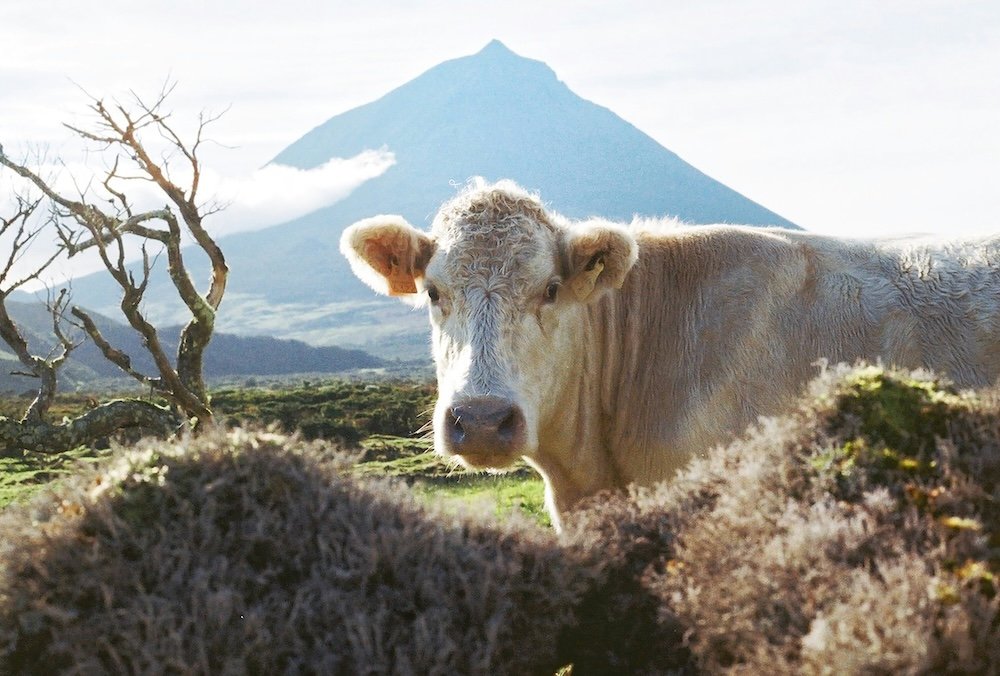
Embarking on a trip to Pico Island, nestled in the Azores, promises an adventure filled with natural beauty, rich history, and cultural immersion.
To make the most of your visit, being equipped with some essential travel tips and practical information is key.
This guide covers transportation nuances, language essentials, currency information, and health and safety advice, ensuring a smooth and enjoyable experience on Pico Island.
Transportation on the Island
Car Rental: To explore Pico Island at your leisure, renting a car is highly recommended. It offers the freedom to discover hidden gems across the island, from secluded beaches to remote vineyards. Several car rental agencies are available at the airport and in major towns.
Taxis and Local Buses: For those not driving, taxis and a limited bus service offer alternatives for getting around. Taxis can be a convenient option, though it’s advisable to agree on the fare in advance. Local buses run between major towns, but schedules can be infrequent, so planning ahead is essential.
Language
Portuguese is the official language of Pico Island. While English is widely spoken in tourist areas and younger generations are generally proficient in English, learning a few basic Portuguese phrases can enhance your interaction with locals and show respect for the island’s culture.
Currency
The currency used on Pico Island is the Euro (€).
Credit and debit cards are accepted in most hotels, restaurants, and shops, but carrying some cash is advisable, especially when visiting smaller villages or local markets.
ATMs are readily available in main towns.
Health and Safety
Emergency Contacts: It’s important to note emergency numbers: the general emergency number is 112, and there are health centers in major towns like Madalena, São Roque, and Lajes do Pico, equipped to handle minor medical issues.
Healthcare Services: For more serious health concerns, the Hospital do Santo Espírito in Angra do Heroísmo on Terceira Island is the nearest hospital with comprehensive medical services. Remember to travel with adequate health insurance that covers medical treatment abroad and potential evacuation.
Safety Tips:
- Natural Hazards: When exploring natural attractions, like hiking Mount Pico or visiting volcanic caves, adhere to safety guidelines and respect warning signs.
- Sun Protection: The Azorean sun can be stronger than expected, even on cloudy days, so sunscreen, hats, and protective clothing are essential.
Water Safety: While the natural swimming pools and beaches are inviting, always be cautious of ocean currents and heed local advice on safe areas for swimming.
Day Trips and Itineraries
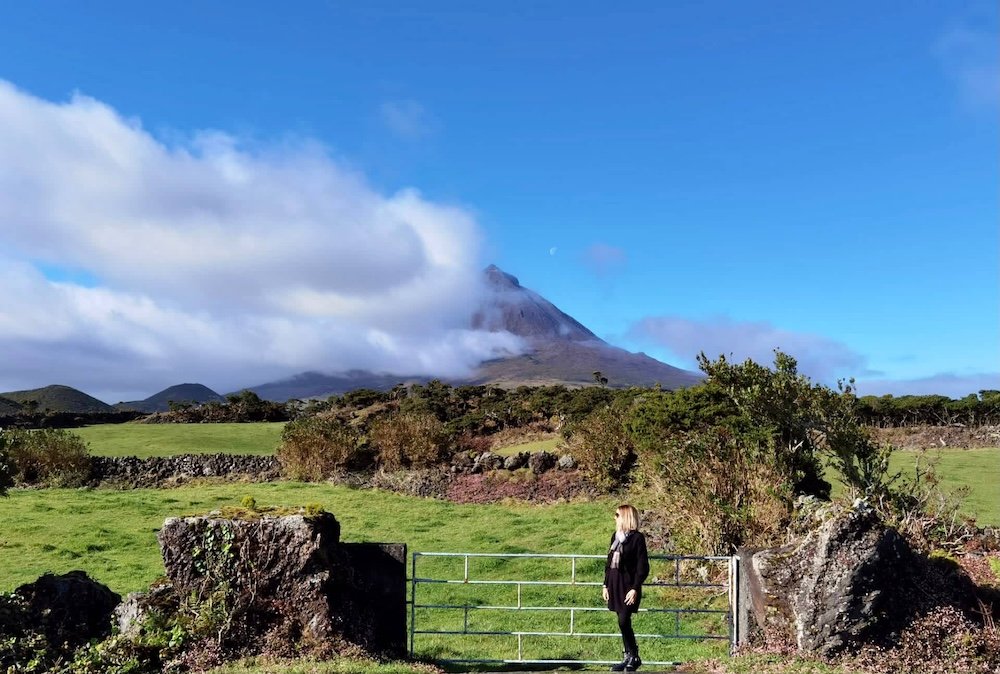
Pico Island, with its diverse landscapes, rich cultural heritage, and unique natural wonders, offers a multitude of experiences for every type of traveler.
Whether you have a few days or a week to explore, this guide outlines suggested itineraries to help you capture the essence of Pico Island and includes tips for embarking on day trips to nearby islands.
Weekend Itinerary
Day 1: Discover Madalena
- Morning: Explore the town of Madalena, visiting the Wine Museum to delve into Pico Island’s wine culture.
- Afternoon: Enjoy a wine tasting tour at a local vineyard, savoring the unique flavors of Pico’s wines.
- Evening: Dine at a seaside restaurant, indulging in fresh seafood while watching the sunset over the Atlantic.
Day 2: Adventure Awaits
- Morning: Take a guided hike up Mount Pico, experiencing breathtaking views from Portugal’s highest peak.
- Afternoon: Relax in the natural swimming pools at São Roque, a perfect way to unwind after the morning’s climb.
- Evening: Sample local cuisine at a traditional Azorean restaurant, ending your day with a taste of the island’s culinary delights.
One Week Itinerary
Day 1-2: Follow the weekend itinerary for an immersive introduction to Pico Island.
Day 3: Whales and Dolphins
- Spend the day on a whale watching tour, spotting various species of cetaceans in their natural habitat.
Day 4: Lajes do Pico
- Visit the Whalers’ Museum in Lajes do Pico, learning about the island’s whaling history.
- Explore the southern coast, enjoying its dramatic cliffs and picturesque viewpoints.
Day 5: Natural Wonders
- Discover the volcanic caves, such as Gruta das Torres, on a guided tour.
- Visit the Lagoa do Capitão, a serene lake offering stunning views of Mount Pico.
Day 6: Island Hopping
- Take a ferry to the neighboring island of Faial, exploring the Caldeira and the Capelinhos Volcano.
Day 7: Leisure and Departure
- Spend your last day at leisure in Madalena, shopping for local crafts and enjoying the laid-back island atmosphere.
- Reflect on your Pico Island adventure with a farewell dinner at a restaurant with views of the island.
Day Trips to Nearby Islands
Pico Island’s location in the central Azores makes it an ideal base for exploring nearby islands, such as Faial and São Jorge. Ferries run regularly, offering an easy way to embark on day trips:
- Faial: Known as the “Blue Island” due to its hydrangeas, Faial boasts the Marina of Horta and the Capelinhos Volcano. The ferry from Pico to Faial takes about 30 minutes, making it a convenient day trip.
- São Jorge: Famous for its dramatic cliffs and Fajãs, São Jorge offers breathtaking landscapes and unique coffee production. The journey from Pico can take up to 1.5 hours by ferry, providing a full day of exploration.
Conclusion
Pico Island, a jewel in the Azores, offers a unique blend of natural splendor, rich cultural heritage, and a deep connection to the sea and land.
This guide has traversed the island’s rugged landscapes, from the towering peak of Mount Pico to the serene beauty of its natural swimming pools and beaches.
We’ve delved into the island’s profound history and vibrant culture, celebrating its renowned wine tradition and the warmth of its people. Pico Island is not just a destination; it’s an experience, inviting travelers to immerse themselves in its many wonders.
Highlights of Visiting Pico Island
- Mount Pico: Ascending Portugal’s highest peak provides not only breathtaking views but also a sense of achievement and connection to the natural world.
- Wine Culture: The vineyard landscapes of Pico Island, a testament to centuries of winemaking tradition, offer a journey through time with each sip of the island’s exquisite wines.
- Natural Beauty: From volcanic caves to crystal-clear natural pools and pristine beaches, Pico Island is a haven for nature lovers seeking tranquility and beauty.
- Cultural Richness: The island’s festivals, culinary delights, and welcoming locals provide a deep dive into the Azorean way of life, enriched by centuries of history and tradition.
Pico Island beckons with its untamed beauty, rich tapestry of culture, and the allure of its wine heritage.
It’s a place where adventure and serenity coexist, offering endless possibilities for exploration and discovery.
Whether you’re scaling the heights of Mount Pico, delving into the depths of a volcanic cave, or simply savoring the flavors of the island’s cuisine, Pico Island offers a multitude of experiences that resonate long after the journey ends.
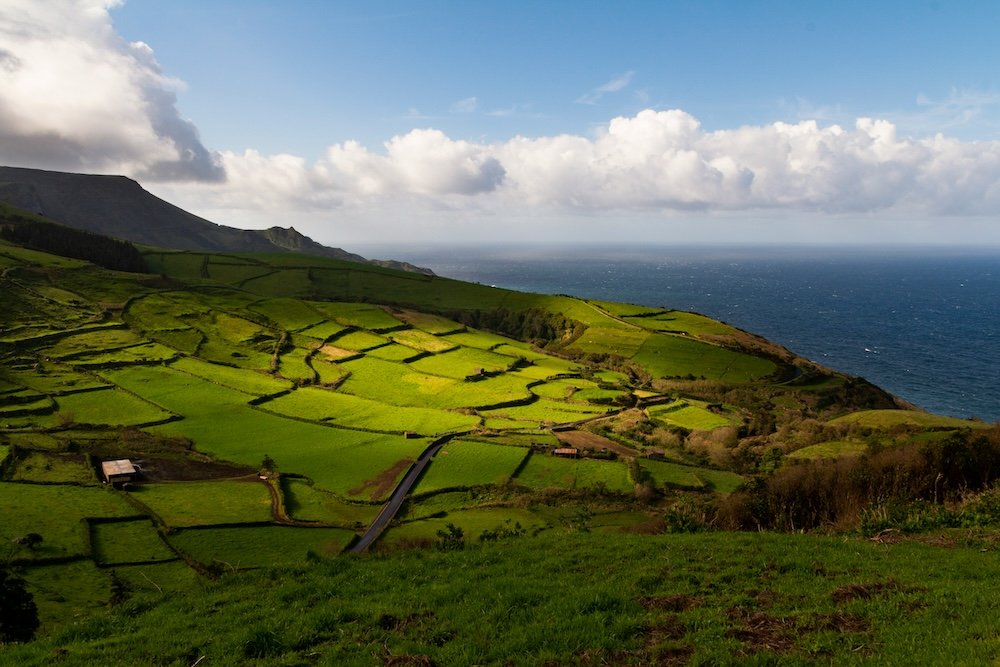
FAQ’s About Pico Island:
What is Pico Island known for?
Pico Island is renowned for its stunning natural landscapes, most notably Mount Pico, Portugal’s highest mountain, which offers breathtaking views and challenging hikes.
The island’s vineyard culture, characterized by unique lava stone enclosures, has earned UNESCO World Heritage status.
Additionally, Pico Island is famous for its whale watching opportunities, rich maritime history, and distinctive wine production, especially the Verdelho wine.
How do you get to Pico Island?
You can reach Pico Island either by air or sea.
The island has its own airport, Aeroporto do Pico (PIX), which accommodates flights from Lisbon and Ponta Delgada, providing direct access.
Alternatively, ferry services operate between Pico Island and other islands in the Azores, such as Faial and São Jorge, offering scenic sea routes for travelers.
How many days do you need in Pico Island?
A minimum of three to five days is recommended to explore Pico Island thoroughly.
This duration allows for a climb to the summit of Mount Pico, visits to the vineyards, exploration of the volcanic caves, and time to relax in the natural pools or beaches.
For those interested in a more leisurely pace or in-depth exploration, extending your stay to a week or more is advisable.
How many people live in Pico Island?
As of the latest data available up to early 2023, Pico Island had a population of approximately 14,000 to 15,000 residents.
The population is distributed across several small towns and villages, with a community deeply connected to the island’s natural environment and traditions.
Do you need a car on Pico Island?
While it’s possible to explore Pico Island without a car, having one is highly recommended for convenience and flexibility.
A car allows visitors to access remote areas, such as secluded beaches and vineyards, at their own pace.
Public transportation exists but is limited, and taxi services can be more costly for extensive exploration.
What are some fun facts about Pico Island?
- Mount Pico, at 2,351 meters (7,713 feet), is not only the highest point in the Azores but also in Portugal.
- The island’s landscape is dominated by volcanic soil, which contributes to its unique vineyard culture.
- Pico Island has a rich tradition of whale hunting, which has transitioned into a focus on whale watching and marine conservation.
- It is part of the “Triangle Islands” along with Faial and São Jorge, known for their close proximity and shared cultural and natural attractions.
What animals are on Pico Island?
Pico Island is home to a diverse range of marine life, including various species of whales and dolphins, particularly sperm whales, blue whales, and common dolphins.
The island’s terrestrial wildlife is mostly composed of birds, such as the Azores bullfinch, and European rabbits, alongside a variety of endemic plant species and insects.
Which country owns Pico Island?
Pico Island is an integral part of Portugal, specifically belonging to the autonomous region of the Azores.
The Azores are an archipelago of nine islands located in the North Atlantic Ocean, and they have been part of Portugal since their discovery in the 15th century.
What towns are on Pico Island?
Pico Island features several towns and villages, each with its own charm and attractions.
The main towns include:
- Madalena: The gateway to Pico Island, known for its vineyards and as a departure point for whale watching tours.
- São Roque: Situated on the northern coast, it’s notable for its natural swimming pools and maritime heritage.
- Lajes do Pico: A historical whaling town with a rich maritime history, featuring the Whalers’ Museum.
